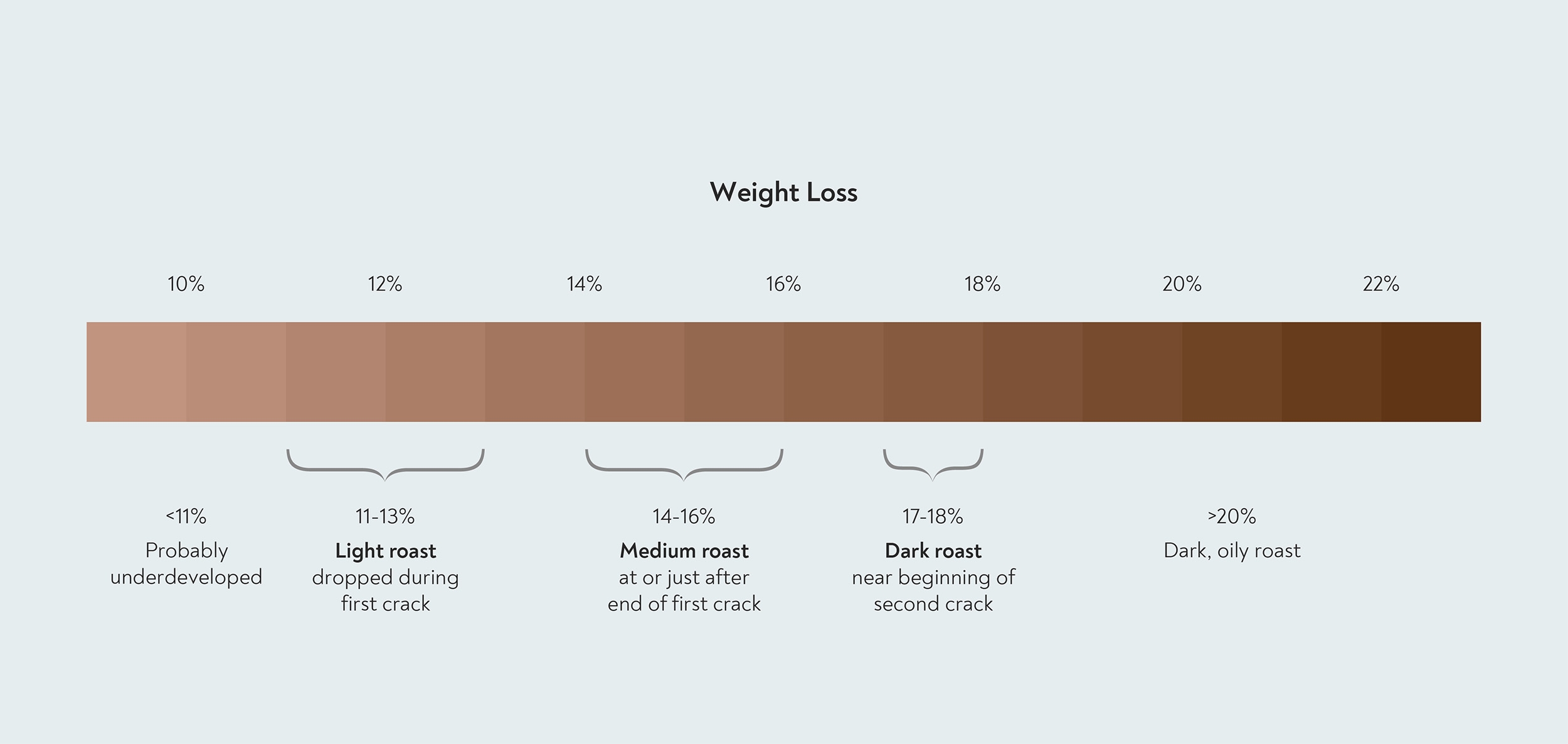The final consideration when deciding on your batch size is how much roasted coffee you get for every kilogram of green coffee you begin with. Depending on how dark you roast and the initial moisture content of the green coffee, your coffee will lose 11–24% of its initial weight during roasting.
Most of the weight loss during roasting results from evaporation of the initial water content of the beans. If you have one batch of beans with 10% moisture and another with 11% moisture, then you can expect close to a percentage point difference in weight loss at the same roast level, thanks to the weight of the extra moisture. The rest of the weight loss consists mostly of carbon dioxide and water generated in chemical reactions.
 Weight loss and roast style. Most specialty roasters operate in the light to medium range and expect weight losses of 11–16%. Green coffee with a higher moisture content will undergo a higher weight loss for the same roast level.
Weight loss and roast style. Most specialty roasters operate in the light to medium range and expect weight losses of 11–16%. Green coffee with a higher moisture content will undergo a higher weight loss for the same roast level.
Calculating weight loss as a percentage is simple:
![]()
For example, if you put 10 kg of green coffee into your roaster and end up with 8.5 kg of roasted coffee, your beans have lost 1.5 kg in weight. The weight loss is (1.5 ÷ 10) × 100 = 15%.
The ‘yield’ refers to the weight of coffee remaining at the end of the roast, expressed as a percentage. The process for calculating the percentage yield is similar to that for calculating weight loss:
![]()
So to continue the example from before, where 10 kg of green coffee yielded 8.5 kg of roasted coffee, the yield is (8.5 ÷ 10) × 100 = 85%.
If you know the expected yield from a given roast profile, you can use this percent value to calculate how much green coffee you need to roast to get a certain amount of roasted coffee. The formula for doing so is as follows:
![]()
So,